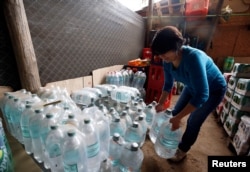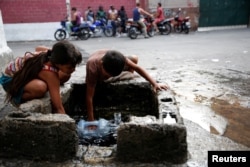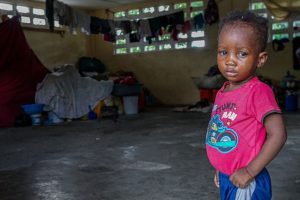The water is at risk. Climate change has caused phenomena such as the rise in sea level; the droughts; floods, or extreme temperatures affect the cycle and quality of water: an essential asset for living beings; food production; and the socioeconomic development of populations.
The most recent report of the Intergovernmental Group of Experts on Climate Change of the United Nations Organization (UN) points out that due to the increase in extreme weather events, the result of global warming, water insecurity associated with the climate will increase.
The United Nations Educational, Scientific and Cultural Organization (UNESCO) stresses that “between 2,000 and 3,000 million people suffer from water scarcity for at least one month a year.” Figures that according to the institution will double “from 930 million in 2016 to 1,700-2,400 million people in 2050”:
“It is said that by 2040 we are going to have such great droughts and such a lack of water that many nations and many populations are going to have to emigrate (…) We are definitely going to have land struggles, land where there is water, where there is drinking water” said to the voice of america Thais Lopez, the director of the Volo Foundationa private organization that advocates fighting climate change and improving education and health.
Faced with this panorama, López says that “the problems of the countries with fewer resources are going to be exacerbated.”
Situation in Latin America:
According to the World Bank, Latin America has almost a third of the world’s water resources, which represents the largest endowment of water per capita. However, environmental conditions, exacerbated by climate change, have depleted reserves.
“This is very evident in Chile, Peru and northwestern Mexico, because these arid areas are getting hotter and the availability of water is starting to be a determining factor,” he told the voice of america Rodolfo Lacy, Director of Climate Action and Environment for Latin America at the Organization for Economic Cooperation and Development (OECD) and Special Envoy for Climate Affairs at the United Nations.
Lacy also stresses that water scarcity is “directly linked” to food production. He explains that if measures are not taken, such as the modification of agricultural activities to dose water, or the implementation of infrastructures for monitoring climatic conditions, the regions that produce food, such as the Paraná basin, in Brazil; Uruguay and Argentina, or the Bajío, in Mexico, could be affected.
“Agricultural activities that in some way depend on high humidity will also be affected, because as the humidity in tropical regions decreases, some super crops such as bananas or coffee will have less chance of being developed as they have been until now.” we had been doing it then,” Lacy stresses.
Another factor that worries professionals is the quality of the water.
High-quality water may contain microorganisms and chemical substances that can develop diseases such as diarrhea or poisoning, indicates the Pan American Health Organization (PAHO).
The institution highlights that approximately 7,600 children under 5 years of age die annually from diarrheal diseases in Latin America. The countries with the highest percentages of mortality from diarrhea among the smallest are Haiti (23%), Guatemala (10%), Bolivia (7%) and Venezuela (5%).
According to Rodolfo Lacy, aquatic contamination must be prevented with measures such as avoiding throwing waste into the water and reducing fertilizers.
“Sometimes we use water to dispose of all kinds of waste (…) We know very well the problem of plastics in bodies of water, both on land and in the ocean, such as chemicals, for example, that dissolve in water (…) Some of them (are) very toxic to animal and plant life.”
The expert points out that the situation is especially complex in Latin America, where sometimes the appropriate method is not available in wastewater treatment systems.
“We are especially concerned about some ecosystems such as mangroves, which protect us from extreme hydro-meteorological phenomena, such as hurricanes or the rise of the sea. (…) They can disappear quickly and that is what has happened,” he adds.
“It is said that we eat a card, the equivalent of a credit card, not only because of plastic packaging, because of everything we take in plastic packaging, but because the fish are consuming the plastic that is discarded in our oceans.” , explains Thais López, from the Volo Foundation.
“Is the moment to act”:
With the aim of organizing concrete actions related to water and sanitation around the world, the United Nations held a conference on water in New York from March 22 to 24, the first event of its kind in almost 40 years.
After the conference, it was proposed to designate a special manager for water, and a multitude of non-binding agreements were drawn up to facilitate access to quality water and sanitation, such as the construction of bathrooms and the restoration of rivers and lakes damaged by the activity human.
The organization’s Secretary General, Antonio Guterres, assured in his final speech that the proposals will be reviewed in July, in high-level political meetings, and reiterated the importance of “committing to a common future.”
“There can be no sustainable development without water,” he said: “It is time to act.”
Connect with the Voice of America! Subscribe to our channel Youtube and activate notifications, or follow us on social networks: Facebook, Twitter and Instagram.















